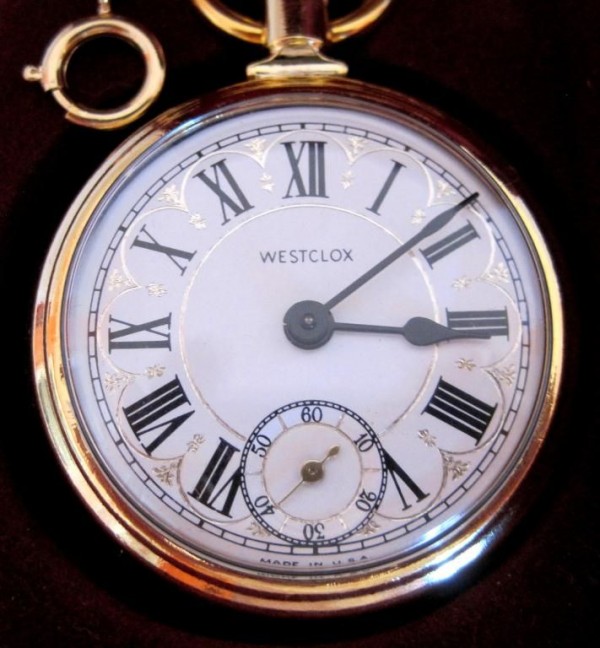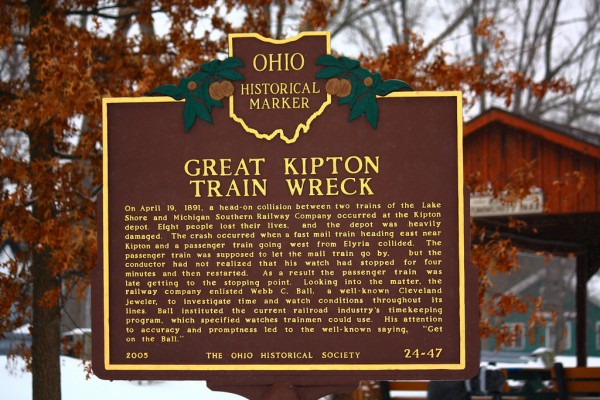On April 19, 1891, the No. 14 fast mail train crashed into the No. 21 Toledo express outside of Kipton, OH. The Great Kipton Train Wreck hinged on a conductor’s pocket watch.
If you were westbound through Ohio from Cleveland along the Lake Shore & Michigan Southern Railroad, you would pass through the towns of Elyria, Oberlin and Kipton in that order. In Elyria, No. 21 was told to let No. 14 pass at the station near Kipton. No. 21 would take the sidetrack. No. 14 would be allowed to speed through. The No. 21 conductor had seven minutes to get from Oberlin to the Kipton passing spot.
It is worth noting the difference between an engineer and a conductor. An engineer operates the locomotive. A conductor acts as a supervisor for the train who maintains schedules and acts on information provided by the railway. A conductor would be informed about delays and figure out where and when to stop; an engineer would make the actual train stop.
Fatally, the No. 21 engineer’s watch had stopped for four minutes. The train ran late and came to a stop at the Kipton switch. No. 14 came at full speed. A line of freight cars may have blocked its view. The No. 21 conductor had not looked at his pocket watch; he assumed that the engineer would look out for No. 14. They did not get the train to the sidetrack.
The wreckage included both engines, three mail cars, and a baggage car. No. 14 reared up and No. 21 lay across the track. Two mail cars mashed and splintered while a third crashed into the station building. Six postal clerks died. Either two or three engineers were lost, depending on the source.
The investigation of the crash placed the blame on No. 21. The General Superintendent of the Lake Shore & Michigan Southern Railroad placed command of the investigation to Webster “Webb” C. Ball. Ball was a Cleveland jeweler who would standardize railroad time.
As the crash resulted from a faulty pocket watch, Ball established watch standards that were implemented in 1893. Accurate watches would become a requirement. Engineers would use Ball watches that used fifteen jewels. These are not gems, but bearings. The fifteen-jewel watch ensured accuracy within thirty seconds per week. Engineers would have to pay for their own repairs, but jewelers would loan a watch in the meantime. The quality of these timepieces was so high that they became the origin of the phrase, “on the ball.”
One pocket watch lost four minutes, but it also lost two train engines, four railway cars, and almost ten lives.




There are no voices yet... Post-script us a message below, won't you?